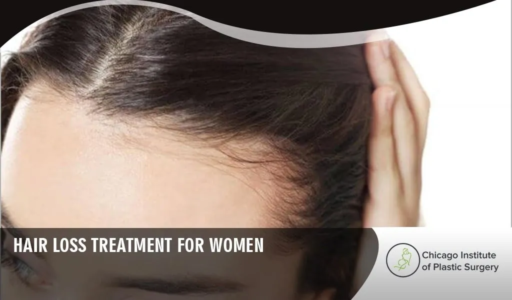Get youthful appearance with hair restoration treatment!! Women hair loss pattern is different from men. They suffer from diffuse hair loss, unlike men who go through characteristic frontal and crown pattern hair loss. Some of the medical causes of female hair loss are anemia, low vitamin D, thyroid hormone imbalance, menopause, and postpartum hormone changes.
How can hair loss be treated in women?
The first step to treat the hair fall is to evaluate the causes of hair shedding and using clinically proven hair products that nourish the scalp and restore the healthy amount of hair. But if you have reached a level of baldness and no product is favoring you, then you need to go with hair restoration treatment.
For women, hair restoration procedures are used by hair transplant surgeon to transplant hair follicles from the thicker areas in the back of the head to the bald areas. The hair follicles are placed precisely and harvested individually. This helps in getting back youthful hairline that fill up the patches of hair loss, and bring back a fuller look throughout. This hair restoration treatment not only rejuvenate hairline but boost self-confidence and self-esteem!
If you are a woman who is considering hair restoration treatment, be sure to find a board-certified plastic surgeon for your treatment options.
Hair restoration surgery is an individualized treatment. To avail, every surgical option to you, find top rated plastic surgeons who have experience in performing these types of hair replacement techniques. Visit CI plastic surgery clinic in Chicago where all the plastic surgeons are very well trained and work under the guidance of Mr. Dhaval Patel who is a Mayo Clinic trained plastic surgeon and winner of multiple patient’s choice award.
In your initial consultation, your hair transplant surgeon will evaluate your hair growth and loss. Top rated plastic surgeons in Chicago will review your family history of hair loss and then ask information if you’ve had any previous hair restoration surgery. Your hair transplant surgeon will also ask about your lifestyle and your expectations and goals for hair transplant surgery.
There are some medical conditions that could cause problems during or after surgery should also be discussed with your surgeon. Some of them are uncontrolled high blood pressure, blood-clotting problems or formation of excessive scars. Be sure to tell your hair plant surgeon if you smoke or take any drugs that affect blood clotting.
Once you are ready for hair transplant surgery, your hair plant surgeon will explain the procedure, types of facilities where, anesthesia, risks and cost involved in it. A good patient never hesitates to ask the doctor any questions.
Who might benefit from a hair transplant?
Getting a hair transplant surgery brings dramatic change in your look and boost self-confidence. Good candidates for a hair transplant include:
- women with thinning hair
- He/she who has lost hair due to scalp injury
Hair replacement is not a good option for:
- women suffering from a widespread pattern of hair loss
- people who don’t have enough “donor” hair sites
- people who form keloid scars after injury or surgery
- people whose hair loss is due to medication issues
What happens during a hair transplant?
After thoroughly cleaning the scalp, a hair transplant surgeon uses a small needle to give anesthesia and numb the area of your head.
Two main techniques that are used for hair loss treatment: FUT and FUE.
In follicular unit transplantation (FUT):
- The plastic surgeon cut out a strip of scalp skin from the backside of the head using a scalpel.
- This is then closed with stitches.
- Then, a hair transplant surgeon makes small sections from the removed portion of the scalp using a magnifying lens and a sharp surgical knife. Then they are implanted to achieve natural-looking hair growth.
For follicular unit extraction (FUE)
- The plastic surgeon makes tiny holes on the scalp with a blade or needle and then gently place hair in these holes. For this procedure, the hair follicles are taken from the back of the head which are directly cut by the hair transplant surgeon.
- During one hair restoration treatment session, a surgeon may transplant about hundreds or even thousands of hair.
- After that, surgeons will cover your scalp with bandages for a few days.
A hair transplant surgery session may take four hours or more. Normally, stitches are removed about 10 days after the hair loss treatment surgery.
You may require up to three to four surgery sessions to achieve a full head of hair you desire. So, if you are looking for hair loss treatment in Chicago, kindly visit CI plastic surgery clinic for hair restoration treatment within affordable rated under the guidance of experienced hair restoration specialist. It has different branches in Oak Brook, Hoffman Estates and other parts in the USA. Do visit if you are looking for some trustworthy hair restoration clinic in Chicago IL and want to get youthful appearance.












